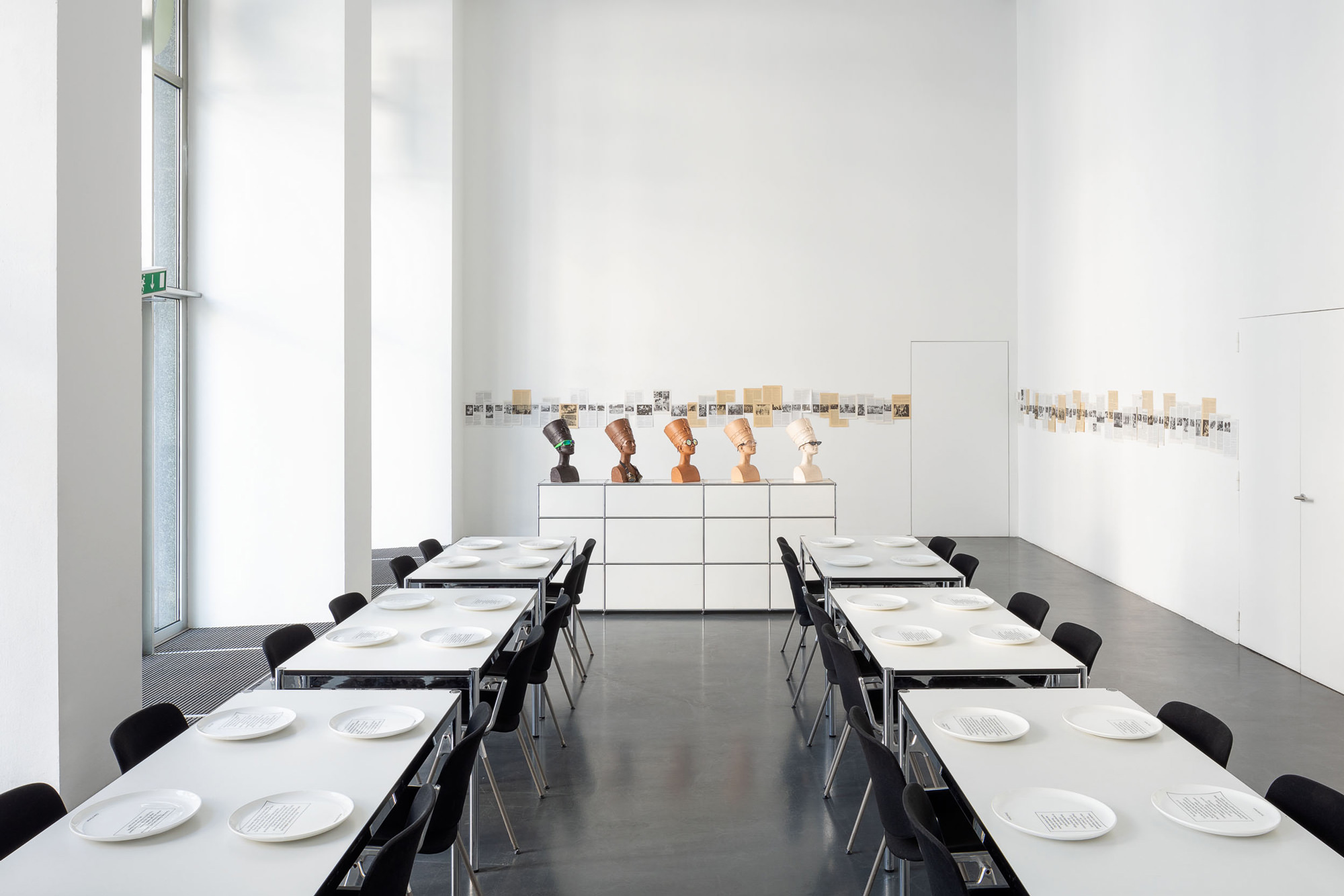Ramaya Tegegne
Monday – Friday: 10:30-17:30
Saturday: 14:00-18:00
Introduction and biography
Images
Biography
Extended text
Monday – Friday: 10:30-17:30
Saturday: 14:00-18:00
Istituto Svizzero is pleased to present “I is we, we is them, them is us, us is I, I is you and you is I”, first solo exhibition in Italy by Swiss artist Ramaya Tegegne.
Ramaya Tegegne’s installations, performances, publications, and projects investigate the economics of art production, display, representation, and reception. She often cites other artists and artworks to do so. Tegegne’s preoccupations for this exhibition lay on the intersection of feminist and activist discourses. She explores collaborative practices, cooperation, conversations as a means of sharing knowledge as well as deconstructing the social preconditions and dominant mechanisms of the art field. The title of the show is a borrowed quote by Sister Souljah, an Afro-American “raptivist”, author, recording artist and community activist.

Ramaya Tegegne, “I is we, we is them, them is us, us is I, I is you and you is I”, installation view at Istituto Svizzero, Milan, 13 September - 26 October 2019. Photo: © Giulio Boem
Ramaya Tegegne, “I is we, we is them, them is us, us is I, I is you and you is I”, installation view at Istituto Svizzero, Milan, 13 September - 26 October 2019. Photo: © Giulio Boem
14) Ramara Tegegne, Genzkens/Wilsons (detail), 2019. 5 Nefertiti busts’ replica, sunglasses
Ramaya Tegegne, “I is we, we is them, them is us, us is I, I is you and you is I”, installation view at Istituto Svizzero, Milan, 13 September - 26 October 2019. Photo: © Giulio Boem
Ramara Tegegne, Chicagos (detail), 2019. 24 ceramic plates
Ramaya Tegegne, “I is we, we is them, them is us, us is I, I is you and you is I”, installation view at Istituto Svizzero, Milan, 13 September - 26 October 2019. Photo: © Giulio Boem
Ramaya Tegegne, 'Our Bodies Ourselves' (detail), 2018. Pages from four editions of the publication Our Bodies Ourselves
Women, Aids & Activism, The Act Up/New York Women & Aids Book Group, 1990, p. 217